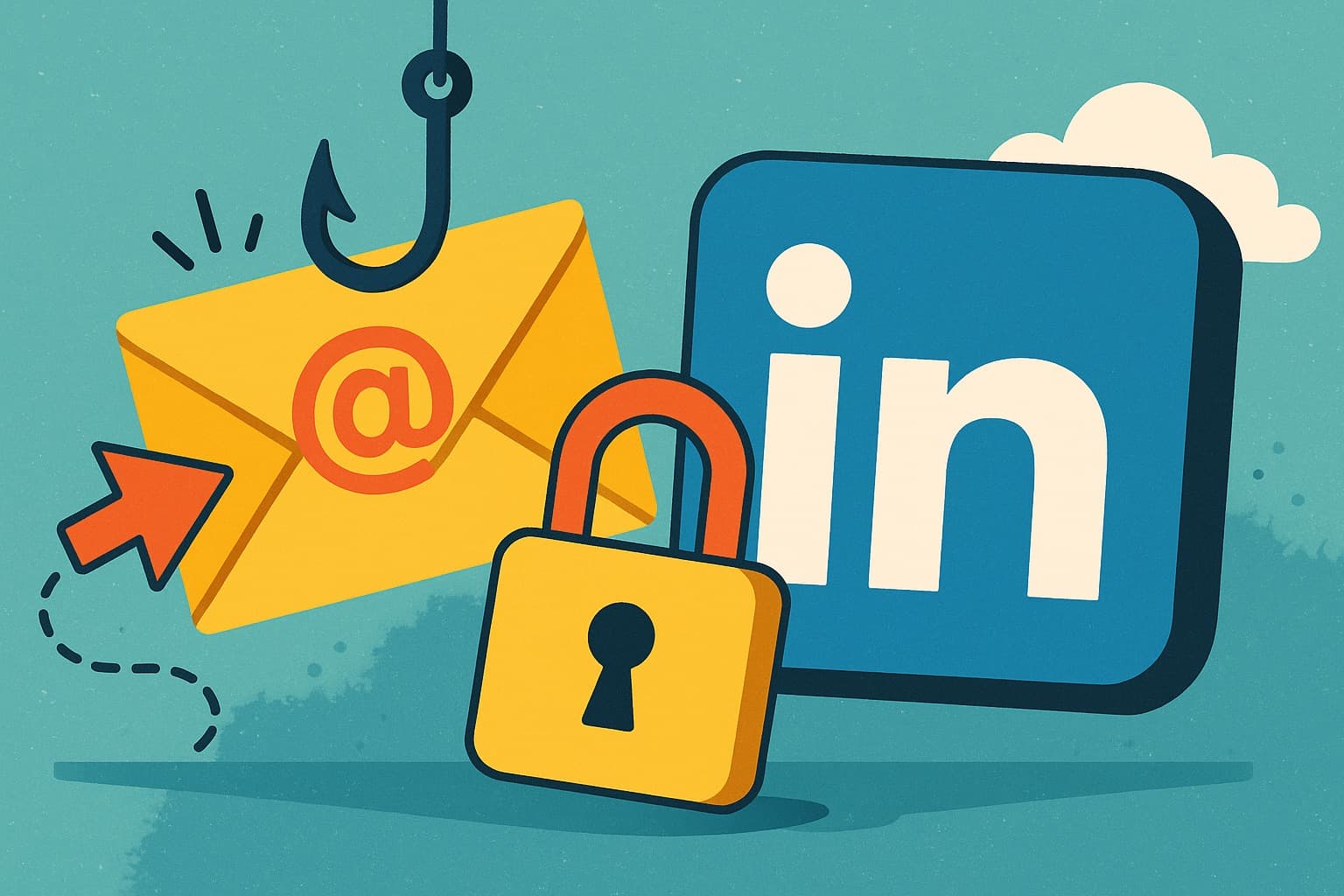Your LinkedIn Email Is Being Harvested — Here’s How to Stop It

Your LinkedIn Email Is Being Harvested — Here’s How to Stop It
You’d think LinkedIn — the professional, polished social network — would be the last place you need to worry about data scraping.
But in 2025, your LinkedIn profile is quietly becoming one of the most valuable pieces of open-source intelligence on the internet.
Not just for recruiters — for scrapers, marketers, and phishing bots.
And they all start with the same entry point — your public email address.
🕵️ How LinkedIn Became a Data Goldmine
LinkedIn was built on visibility: recruiters wanted easy access, companies wanted outreach, professionals wanted to be found.
The problem? That same discoverability has turned into a global data extraction pipeline. Scraper bots crawl millions of profiles, collecting:
- Public email addresses
- Job titles and company info
- Education and activity history
- Engagement patterns
They package that data into databases powering lead generation, business intelligence, or unsolicited marketing.
You might never see the transaction — but your inbox will.
📬 The Real Problem: Secondary Exposure
Here’s what actually happens behind the scenes:
- A scraper copies your email from your profile or exported connection list.
- It lands in a B2B data warehouse or is sold to a marketing firm.
- That firm merges it with social signals (location, company size, job title).
- Within weeks, your professional inbox receives “personalized” pitches that seem eerily specific.
You never consented. And unsubscribing doesn’t help — your email has already propagated through multiple systems.
💣 Why Simply “Hiding” Your Email Isn’t Enough
LinkedIn allows you to hide your email from public view — but:
- If you’ve ever exported contacts, your address may already exist in others’ CSVs
- Some third-party tools pull your email during mutual connections
- Recruiter accounts often have enhanced visibility privileges
Once exposed, it’s permanent. The only way forward is containment, not deletion.
🧩 The Smart Fix: Use a Burner or Alias for LinkedIn
Instead of linking your real inbox:
- Create a burner email specifically for LinkedIn and recruiting
- Route replies to your main inbox with forwarding rules
- Auto-filter all LinkedIn communication into one folder
- If spam or phishing increases, deactivate the alias instantly
It’s like giving your digital business card a self-destruct switch.
⚙️ Step-by-Step Setup for Maximum Privacy
- Generate a new alias (e.g.,
linkedin@youralias.burn) - Update your LinkedIn contact email under Settings → Sign In & Security → Email addresses
- Create a filter in your main inbox to label and route these emails
- Disable visibility to “1st-degree connections only”
- Rotate your alias annually to disrupt stale data leaks
You’ll stay contactable but untraceable.
🧠 Bonus Layer: Shielding Your Professional Identity
If you freelance or consult, you want visibility — just not exposure:
- Keep a contact form on your website instead of posting an email
- Use a booking link or encrypted form for inquiries
- Rotate burner addresses for public listings, leaving a trail you can later erase
It signals professionalism and security awareness — a subtle edge where privacy competence builds trust.
💬 Why This Matters Beyond Spam
Phishing actors increasingly use scraped LinkedIn data to mimic internal company emails.
You get a message that looks like HR, finance, or a vendor — referencing your actual employer and title.
That’s not luck. That’s scraped data.
A burner address limits exposure. It’s a dead-end for bad actors.
🌍 The Broader Lesson: Visibility Without Vulnerability
Professional visibility shouldn’t cost personal safety.
LinkedIn connects people — but burner emails protect boundaries.
It’s the difference between being reachable and being exploitable.
So before the next recruiter outreach or thought-leadership partnership lands in your inbox, remember:
You can’t stop the scrapers — but you can make their data worthless. One alias at a time.